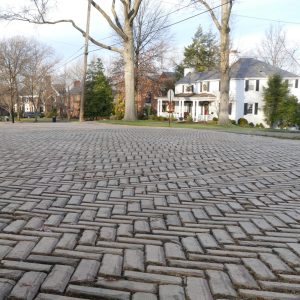Navigating the sights of Lisbon
After feeling rested from our first excursion into the dazzling colors, sights and overabundant uphill stairs that this charming city has to offer, our travel group headed towards the Tagus River, with much more level terrain.
The Portuguese have always had a close connection to the sea, as its 2 major cities are located along the Atlantic coast. This close proximity has allowed the Portuguese to access the many riches the ocean has to offer. In 1336, the Portuguese set sail from Lisbon and headed south, launching what is known as The Age of Discovery. The Portugese bond to the sea is expressed throughout Lisbon in the patterns of the plazas and sidewalks, in architectural details of buildings, and on the many monuments celebrating the Renaissance Era heritage. The city’s Belem neighborhood, whose name derives from Bethlehem, is located near the waterfront. Lison holds many great examples of the city’s nautical heritage.
Our first stop on the walking tour of Lisbon was the elaborate Jeronimos Monastery.
The monastery opened in 1495 and was designed in the Portuguese Gothic style known as Manueline. It’s the former home of The Order of Saint Jerome, which offered prayers to the king and cared for returning sailors that were either sick or in of need medical care. It’s also the birthplace of the quintessential Portuguese pastry, the Pastel de Nata. At the time, egg whites were used to starch the order’s clothing which creating an abundance of egg yolks, thus giving birth to the Pastel de Nata.
Who knew that serendipity could be so delicious.
Come on, let’s have a look around…



As we left the monastery and headed towards the Tagus River, we crossed the Jardim de Praça do Imperio to reach The Monument of The Discoveries.


The monument, completed in 1960, celebrates the 15th and 16th centuries, which were the Age of European Oceanic Discovery.
The plaza has a mosaic pattern of waves which launches the caravel’s bow high up on the monument.
Leading the way is Henry the Navigator holding a model of the Portuguese carrack, followed by the king and Vasco da Gama. These 3 individuals were largely responsible for opening the silk and spice route to India, the Far East and eventually onto the treasures held within the Brazilian rainforest.
Moving along, we saw the Tagus with the 25 de Abril Bridge, whose name commemorates the Carnation Revolution of April 25, 1974 and the fall of western Europe’s longest serving dictator. We then approached Belem Lighthouse, built in 1840 for The World Exposition.

Within a short distance, we found ourselves at the Torre de Belem, one of the many fortifications designed to defend Lisbon in 16th century. Built in 1515, the tower served as a defense against marauding naval raiders and a point of departure for sailors traveling to Goa, Macau and Kyoto. The tower has the distinctive Portuguese architectural style known as Manueline, which was a sumptuous blend of many different styles, including Gothic, maritime, Flemish and Mudejar design elements. Torre de Belem is the perfect example of the short-lived decorative style that transitioned Europe from the Middle Ages into the Renaissance Era. It was originally built on a small island in the Tagus River, but a 1755 earthquake shifted the island to it’s current location, closer to the shoreline.




That was quite the day and a lot to take in, so we rewarded ourselves with some coffee and the delectable Portuguese dessert, the Pastel de Nata. We deserved it. Saúde!






